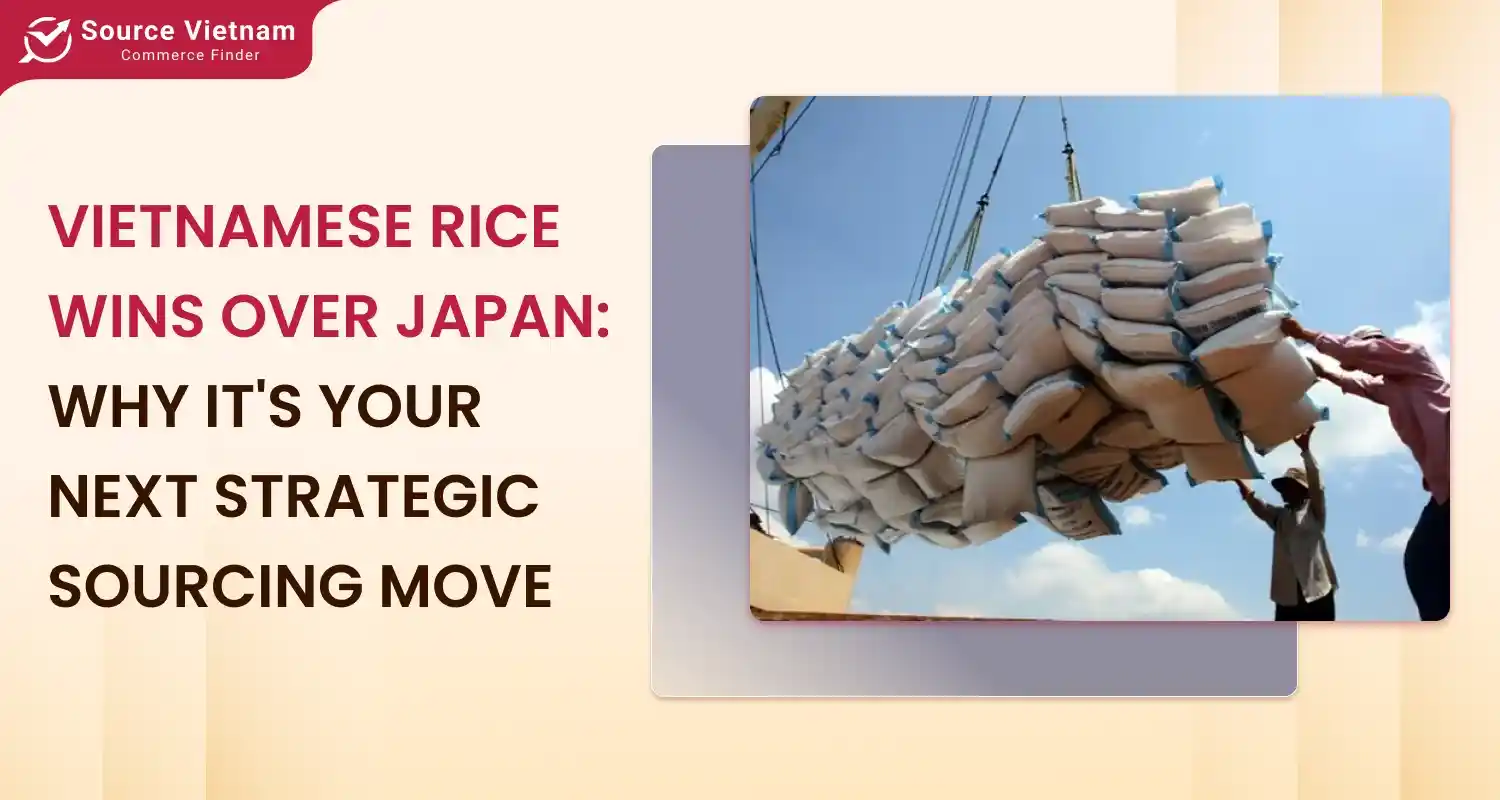
HÀ NỘI – In a significant trend highlighting Vietnam’s growing reputation for agricultural quality, Japanese consumers are increasingly choosing Vietnamese rice as a high-quality, cost-effective alternative to domestic varieties. This shift signals a major opportunity for international businesses looking to source reliable and competitively priced rice.
Japanese retailers report surge in demand for Vietnamese rice
The rising popularity is evident on the ground. Takashi Takanashi, Board Director of Spice House Co., an imported food wholesaler based in Sagamihara, Kanagawa Prefecture, has noted a marked increase in inquiries about Vietnamese rice from both restaurants and retail customers.
“Our store offers a five-kilogram bag of Vietnamese-grown Japonica rice for ¥3,240 (approximately $21.80),” Takanashi explained to the press. “This presents significant savings compared to the typical ¥4,000 (around $27) price tag for Japanese-grown Japonica of similar quality.” Japonica rice, characterized by its short, sticky grains, is the staple variety preferred throughout Japan.
Crucially, Takanashi emphasized the similarity between the Vietnamese and Japanese products. “Vietnamese Japonica rice closely resembles its Japanese counterpart in both appearance and taste,” he stated. This quality parity, combined with the price advantage, has led to soaring demand. Spice House Co. has experienced stock shortages, prompting them to implement a temporary one-bag-per-customer limit to manage the high demand.
Market data confirms trend despite import hurdles
This anecdotal evidence is backed by broader market data. Japan’s Ministry of Agriculture reports a significant jump in private rice imports. Volumes surged from 368 tonnes in the fiscal year 2023 to 991 tonnes recorded by the end of January 2025. This increase occurred despite Japan imposing a substantial tariff of ¥341 (approx $2.30) per kilogram on private rice imports.
Even with this tariff, imported rice, particularly from Vietnam, remains an attractive option. Premium domestic Japanese rice varieties, such as the well-known Koshihikari, often retail for around ¥800 (approx $5.40) per kilogram, according to reporting by Mainichi.jp. The ability of Vietnamese rice to compete effectively even with import duties underscores its compelling value proposition.
Why international businesses should source rice from Vietnam
Vietnam’s success in the discerning Japanese market highlights why the country is a prime location for sourcing rice globally. Here are key advantages:
- Proven quality and diversity: As the Japan example shows, Vietnam can produce high-quality rice varieties like Japonica that meet stringent international standards. Beyond Japonica, Vietnam offers a wide array of rice types, including fragrant Jasmine, long-grain white rice, sticky rice, and healthy brown rice options, catering to diverse global tastes and culinary needs.
- Competitive pricing: Vietnam consistently offers some of the most competitive rice prices on the global market. Efficient farming practices, favourable growing conditions, and lower labour costs contribute to a significant price advantage, allowing businesses to improve their margins or offer better value to end consumers.
- Large-scale production and reliability: As the world’s fifth-largest rice producer and one of the top exporters, Vietnam boasts immense production capacity. This ensures a stable and reliable supply chain, capable of meeting large-volume orders consistently throughout the year. Buyers can depend on Vietnam for steady sourcing.
- Extensive export experience: Vietnam has decades of experience exporting rice worldwide. Vietnamese suppliers are familiar with international trade regulations, shipping logistics, quality control protocols, and phytosanitary requirements, ensuring smoother transactions for importers.
- Growing global reputation: Success in demanding markets like Japan, the Philippines, China, and parts of Africa is bolstering Vietnam’s reputation as a trusted source of quality rice. This growing acceptance makes Vietnamese rice an easier sell in various international markets.
- Continuous improvement & innovation: Vietnam’s agricultural sector is continuously working on improving seed varieties, farming techniques, and post-harvest processing to enhance quality, yield, and sustainability.
Conclusion
The growing preference for Vietnamese rice in Japan is more than just a fleeting trend; it’s a testament to the country’s ability to deliver quality agricultural products at excellent value. For international food distributors, retailers, and restaurants seeking a reliable, high-quality, and cost-effective rice supply, Vietnam presents a compelling and strategic sourcing opportunity.